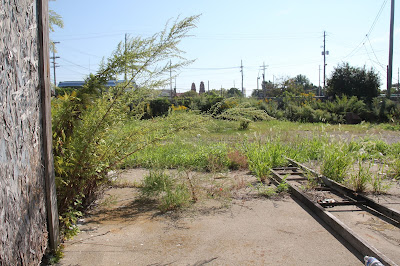The above photo shows part of a crumbling, abandoned building, yet wherever a seed found its way into a crack in the pavement, it began to grow some hardy wild plant--many with flowers and seeds. There are even trees and shrubs--all planted by Mother Nature. Bees and other insects buzzed around in the hot sun. Every city has places like this, and with a plan in place could become a habitat for pollinators. Cities with their miles of concrete and sun reflecting off buildings are warmer than open areas and could extend the growing season to accommodate our native bees. Vacant land could become useful again as bee-loving gardens spread, adding beauty to the purpose of pollination.
Some of these abandoned areas are large and could create oases of lush growth that would nurture, not only native bees, but many varieties of birds and butterflies. Native wildflowers, once established, do not need regular watering. They do best without fertilizer.
Seed packets, many labeled specifically for your area, are readily available in mixes that sometimes include annuals to beef up the mix until perennials begin to bloom


No comments:
Post a Comment